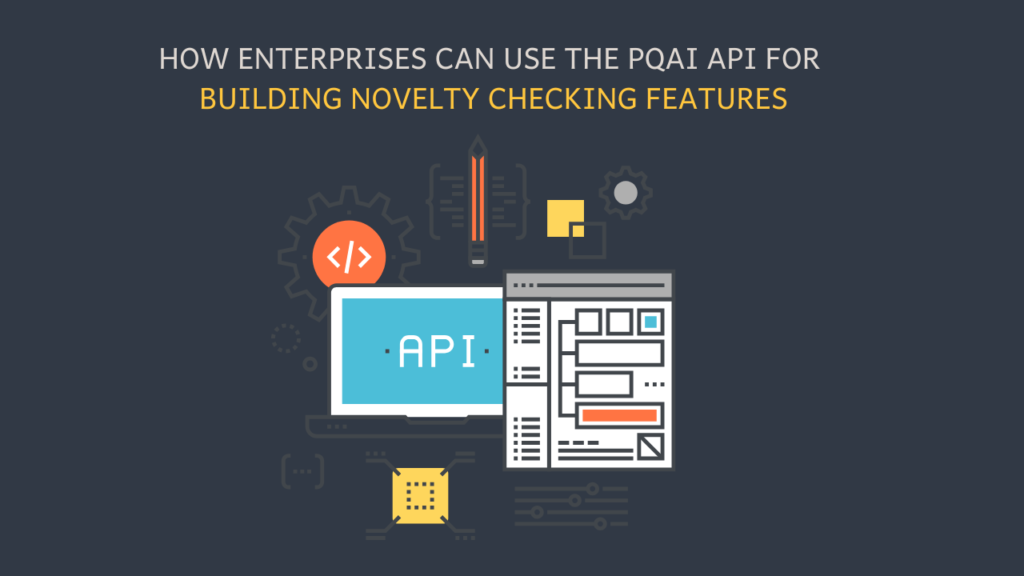
How Enterprises Can Use the PQAI API to Build Novelty Checking Features
You have already witnessed how powerful the PQAI API can be for semantic patent search. Now you want to bring that same intelligence into your
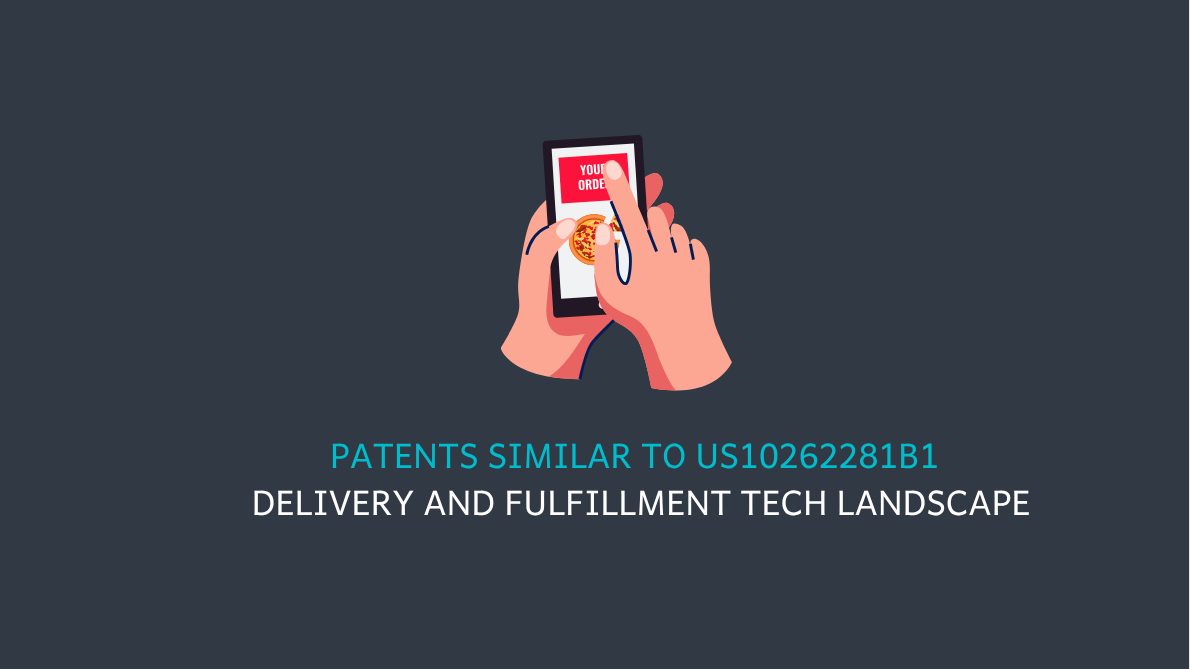
If you’ve ever tracked a Domino’s pizza from oven to doorstep, you’ve likely seen this message tucked beneath the progress bar: U.S. PATENT 10262281.
It’s not just a legal formality. This patent, filed in 2007 and granted twelve years later in 2019, quietly powers one of the most recognized order tracking interfaces in consumer delivery today.
What makes it stand out isn’t just its technical scope. It’s how early it saw the challenge of centralized visibility across decentralized operations. In other words, how to let a customer track their order, without needing to know which store took it or which internal system is managing it.
That’s exactly what Domino’s patented.
Why is this patent drawing attention now?
Because we have entered a new phase of delivery and fulfillment innovation. Ghost kitchens, grocery platforms, and autonomous delivery fleets are changing how orders are managed. Suddenly, what Domino’s built in the 2000s feels extremely relevant again.
Entrepreneurs, engineers, and legal teams are asking the same question. Is my new idea too close to something that is already patented?
To find the answer to this question, we used our PQAI tool. We analyzed the technology behind US10262281B1 and surfaced other inventions that share its conceptual foundation. What we found spans industries, regions, and business models, right from food service to fintech.
Before we share the findings, here is what we entered into the tool.
We studied the patent and wrote a natural language query that summarizes how the system works. Our query was as follows:
System for centralized tracking of orders placed at decentralized locations, using a single customer identifier, with real-time status sync and optional SMS/email/voice notifications.
When we entered this query into the tool, here’s what the results looked like:

The tool returned 91 results, in which the Domino’s patent surfaced as the top result. This validated that our query accurately captured the core functionality of the patent in simple, clear language.

However, the results were not limited to one industry alone. We found patents filed by companies like eBay, and even one with a priority date as far back as 2001.

Let’s look at some of the interesting patents we found in detail.
Filed more than six years before Domino’s patent, the WO2001015040A1 patent tackles a key part of the problem: notifying customers when their order is ready. It links a customer ID with an order, tracks its progress, and sends email updates once status changes occur. While it lacks the full decentralization logic and system interoperability of the Domino’s patent, it proves that status-based customer messaging was being explored long before 2007.
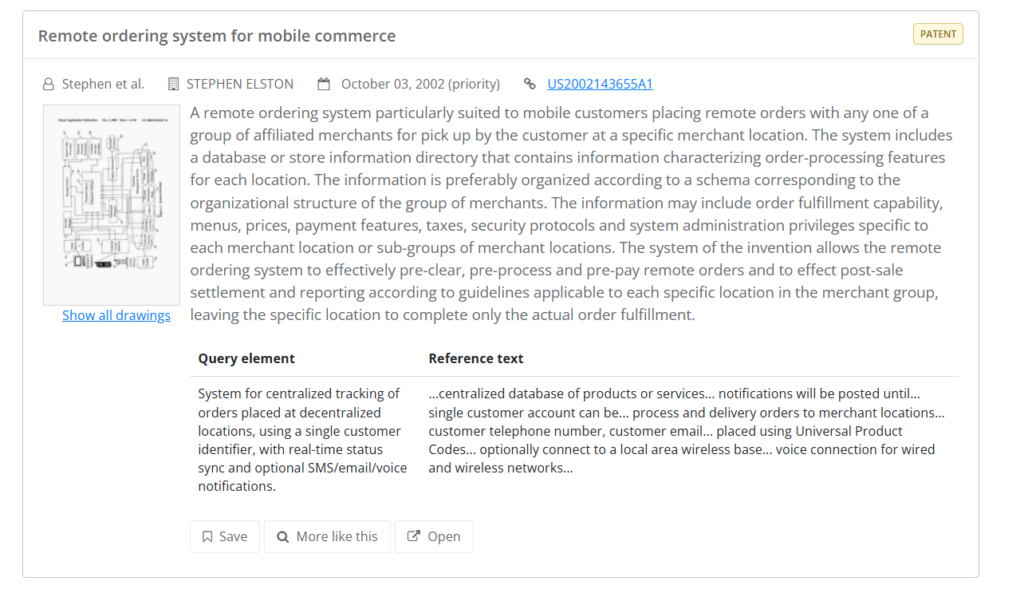
Filed in 2002, this patent imagined a world where customers could place remote orders through their mobile phones, and do it across a network of affiliated merchants. It mapped out how menus, pricing, taxes, and payment rules could adjust based on the store location, all before smartphones became mainstream. It didn’t just allow mobile ordering. It built the rulebook for handling distributed merchant logic behind the scenes. For its time, this was bold. Most businesses hadn’t even thought of letting customers transact this way.
Interestingly, US8117086B1 looks at order tracking from the lens of enterprise infrastructure. Filed in 2012, it connects internal business system. Think payment processing setups across multiple locations, and updates a centralized database based on “trigger events” like hardware installation or service initiation. This patent tackles the same challenge Domino’s solved for consumers: how to sync distributed actions into a single, real-time view of order status.
Filed by eBay in 2013, US2013080280A1 tackled linking a customer’s mobile device with their order and tracks their proximity to the pickup location. As the customer gets closer, the system updates the merchant and adjusts how the order is provided. It’s not just about knowing where an order stands, it’s about adapting fulfillment in real time based on where the customer is. Domino’s patent may have focused on kitchen-to-door status, but this shows how location-aware logic can drive smarter handoffs in physical retail too.
Taken together, these patents show that the challenge Domino’s tackled has been approached in many ways. The challenge of connecting decentralized operations into a seamless customer experience has surfaced repeatedly across industries and timelines.
From early email-based order updates to proximity-triggered handoffs, the underlying question is the same: How do you design systems that work across locations, adapt to real-world variables, and still keep the customer in the loop?
If you are building anything today in food tech, last-mile logistics, or retail automation, you are likely brushing up against these same patterns. Whether you realize it or not.
If you are building anything that connects users to real-world fulfillment—whether food, retail, or logistics, these patents are closer to your roadmap than you might expect.
Most delivery systems are built on layers of APIs, logistics platforms, and user-facing updates. Each of these may resemble something already patented.
This is not a blocker to innovation. But it is a reminder to stay alert. What feels like a simple product decision, such as tracking orders via a phone number, might be someone else’s protected mechanism.
Studying related patents early can help founders, PMs, and inventors to avoid missteps, identify fresh angles, and strengthen their IP strategy. That too, long before the product launch. Not to mention, it could save you thousands of dollars in filing and search fees too.
That’s where PQAI comes in. You do not need to be a patent expert either to use PQAI.
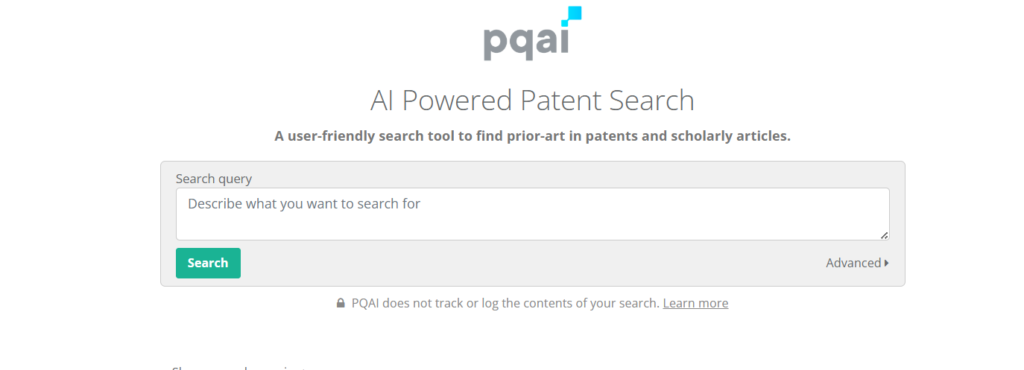
Source – PQAI
Just describe your idea in simple language, like “a system that lets users track food orders across stores using one phone number.” PQAI will scan across millions of patents from major patent offices and 11.5 Million+ research papers to surface inventions with similar logic.
And this patent search tool won’t dump vague titles at you. It shares the exact snippets where your idea overlaps with existing work, so you know, instantly, what’s relevant and what’s not.
That’s the difference.
Whether you’re refining a feature, drafting a provisional patent, or just validating white space before launch, PQAI lets you explore the IP landscape without wasting hours. You can even export results, share them with the legal team, and revisit your queries later.
You can try the tool for free here. It’s fast and might save you from reinventing the wheel.
At PQAI, we bring clarity to the world of patents. Through storytelling and insight, we simplify inventions so innovators, researchers, and businesses can learn from the past and build the future.
Share

You have already witnessed how powerful the PQAI API can be for semantic patent search. Now you want to bring that same intelligence into your

You have already explored what PQAI can do. Now you want to bring its semantic patent search into your own product or tool. Maybe you
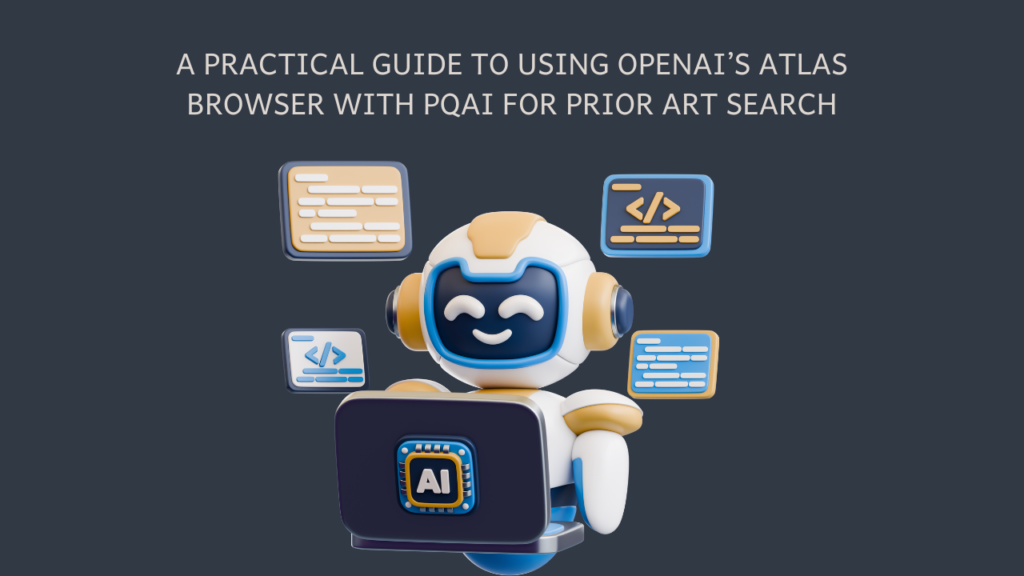
OpenAI’s Atlas browser marks a new milestone in AI-driven research. Research on the web has always been a bit awkward for AI. It could fetch
Dear PQAI Team,
We are pleased to express our support for PQAI and its mission to revolutionize patent searching through open-source, AI-driven solutions.
At [COMPANY NAME], we recognize the importance of accessible and efficient patent tools in fostering innovation and empowering inventors from diverse backgrounds. By supporting PQAI, we aim to contribute to the development of transparent, collaborative, and impactful solutions for the intellectual property community.
We kindly request the addition of [COMPANY NAME] to the official List of Supporters of PQAI.
Sincerely,
[CEO or Equivalent Name]
[Title]
[Company Name]
[Signature]